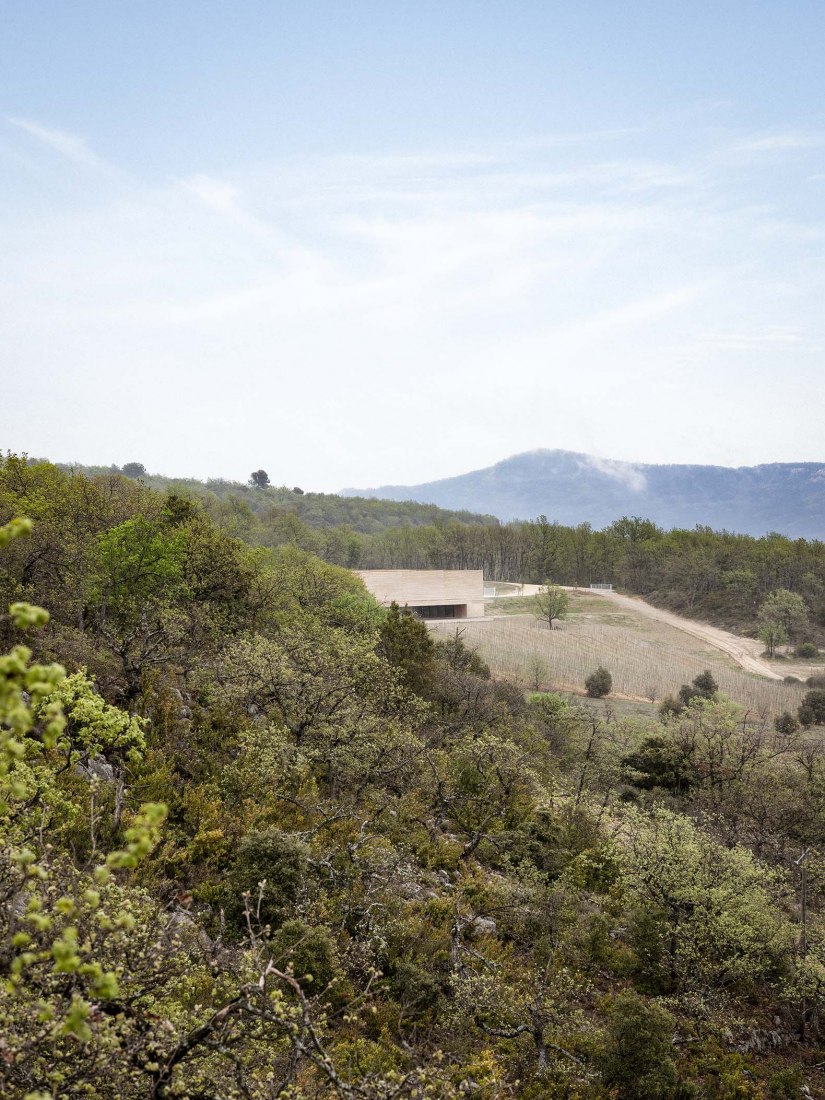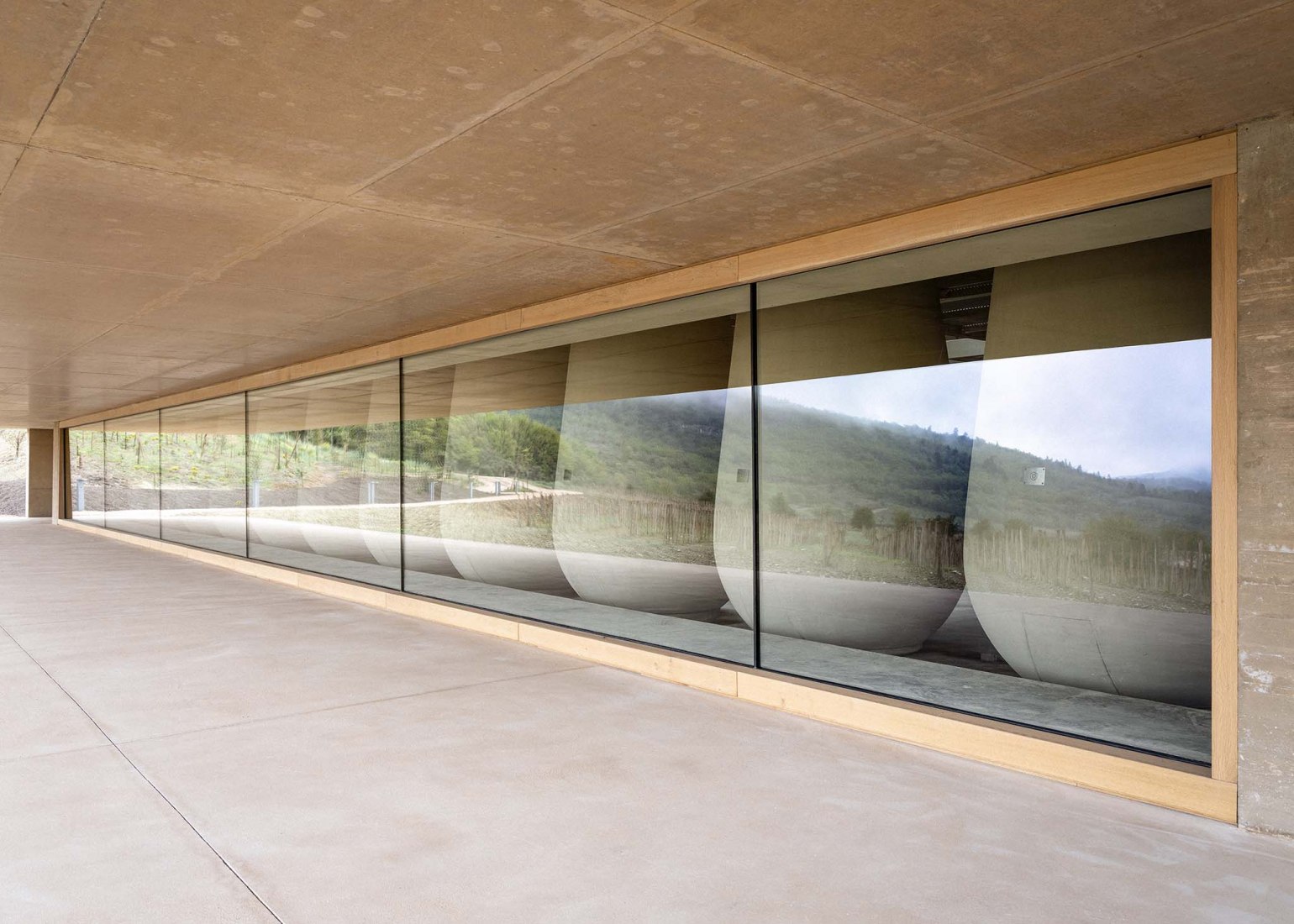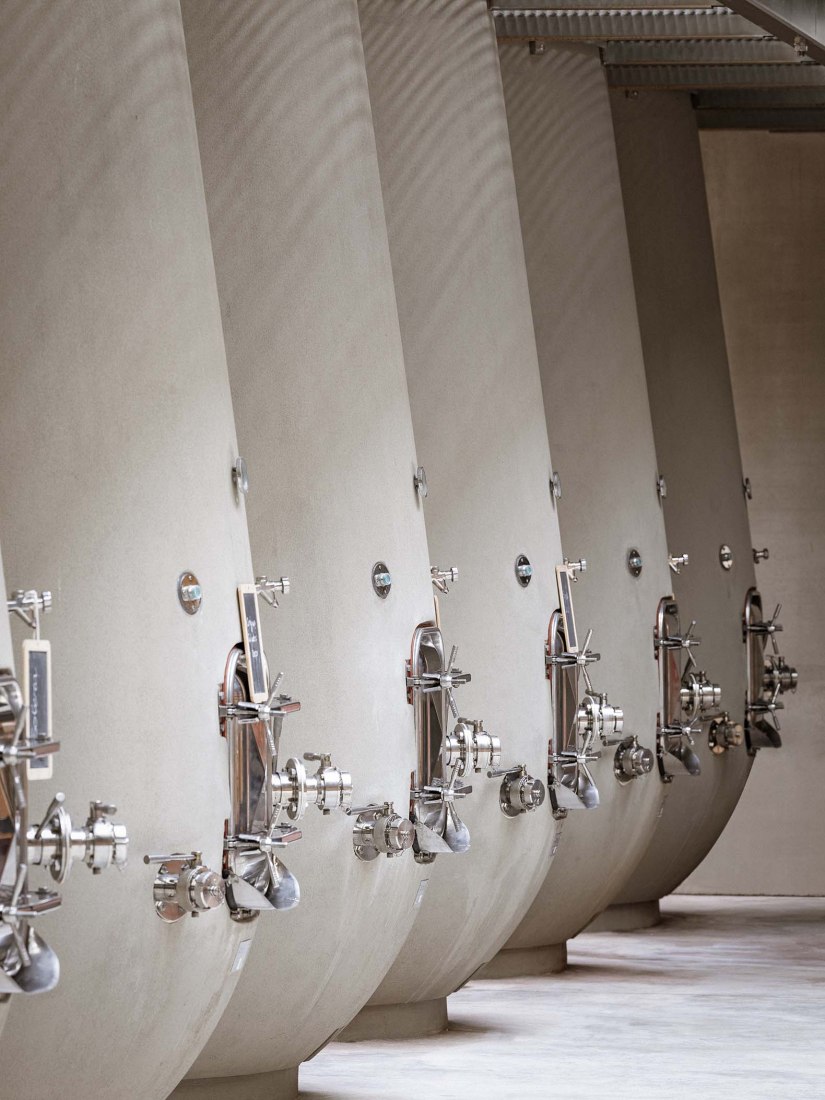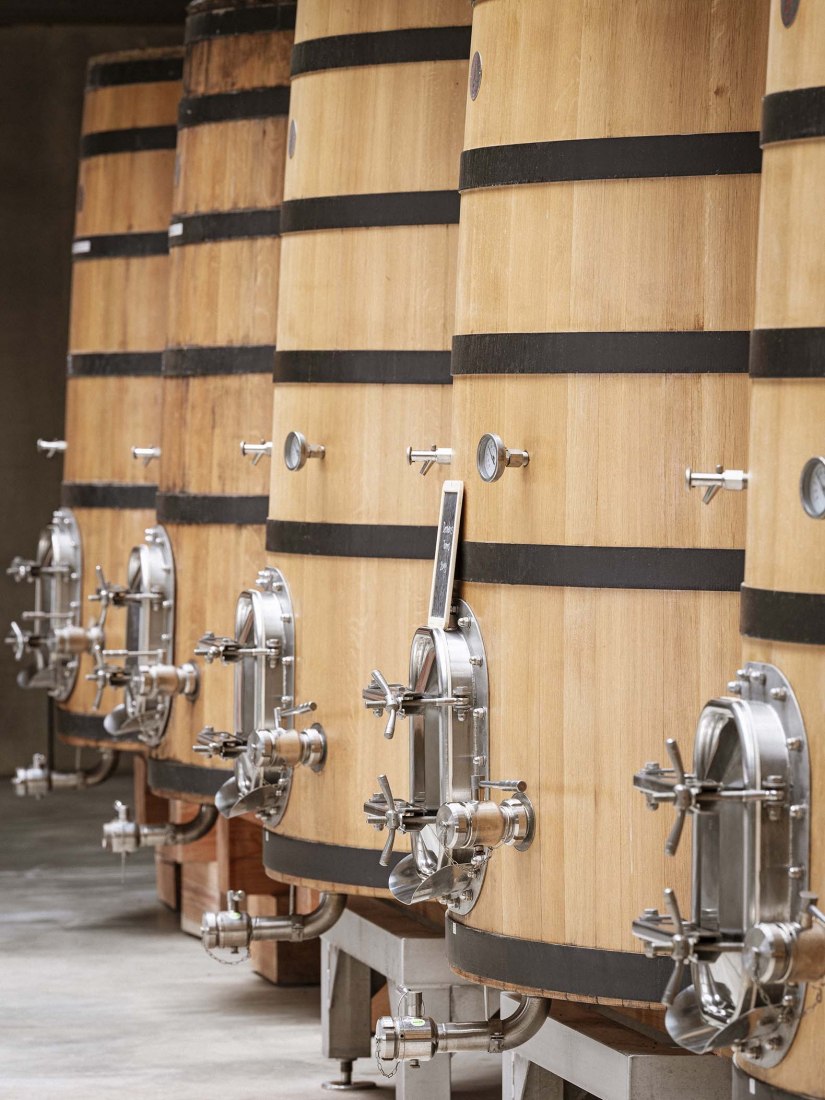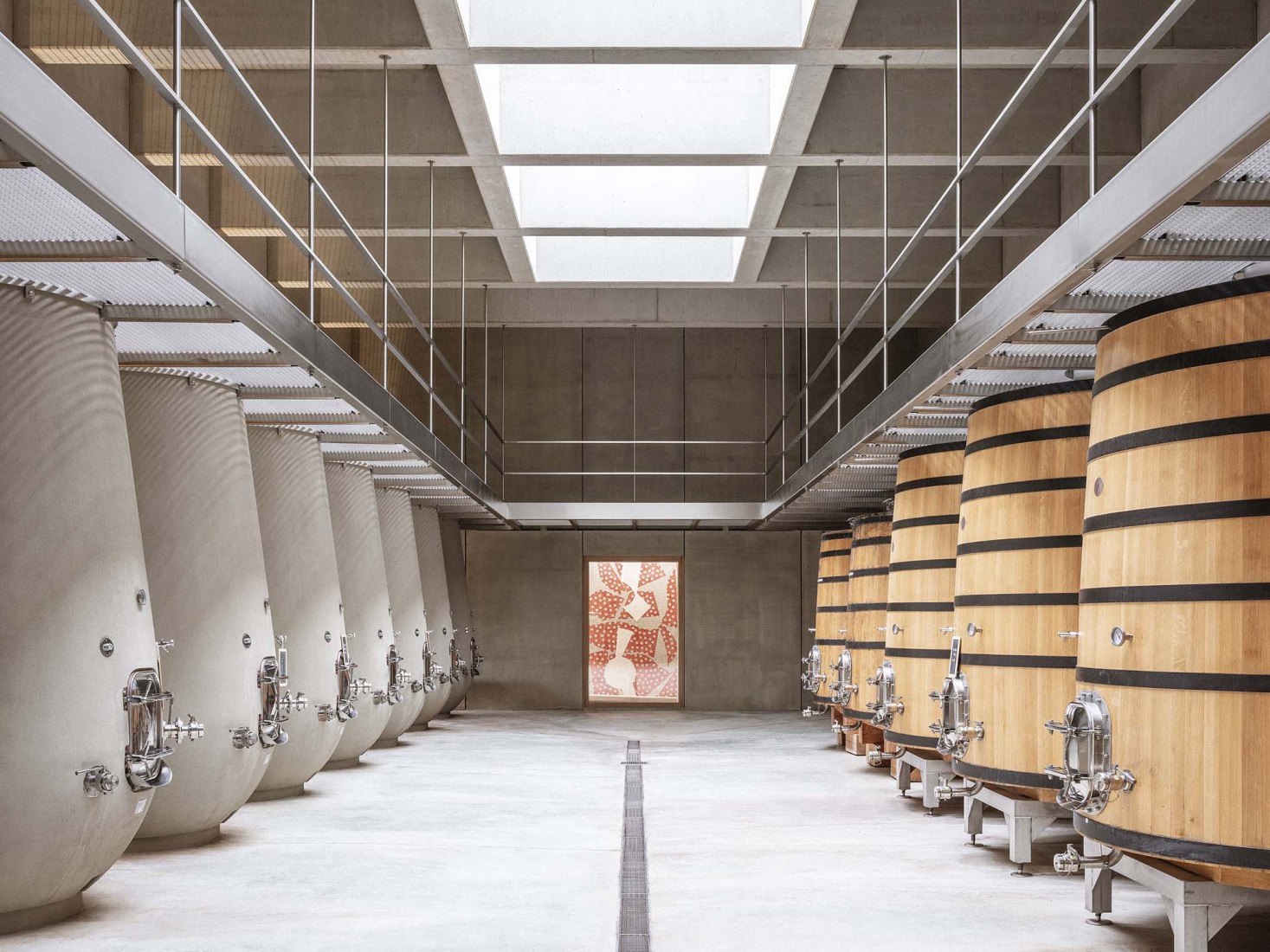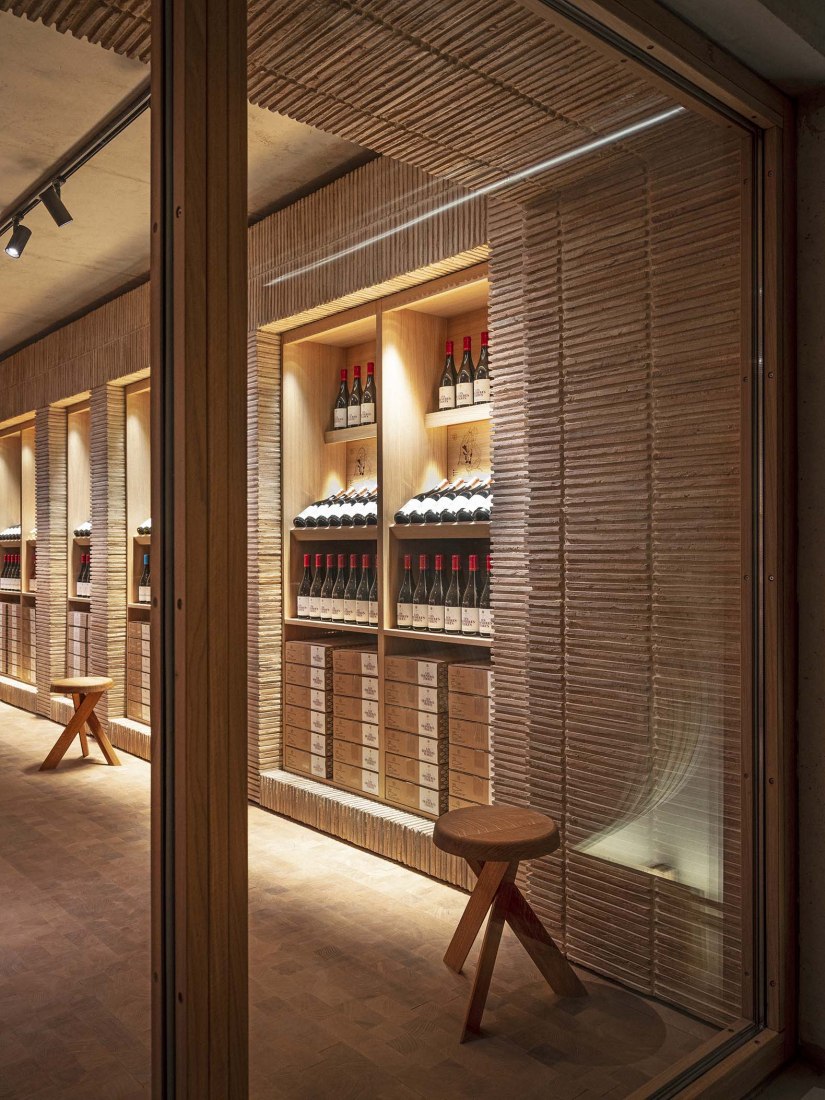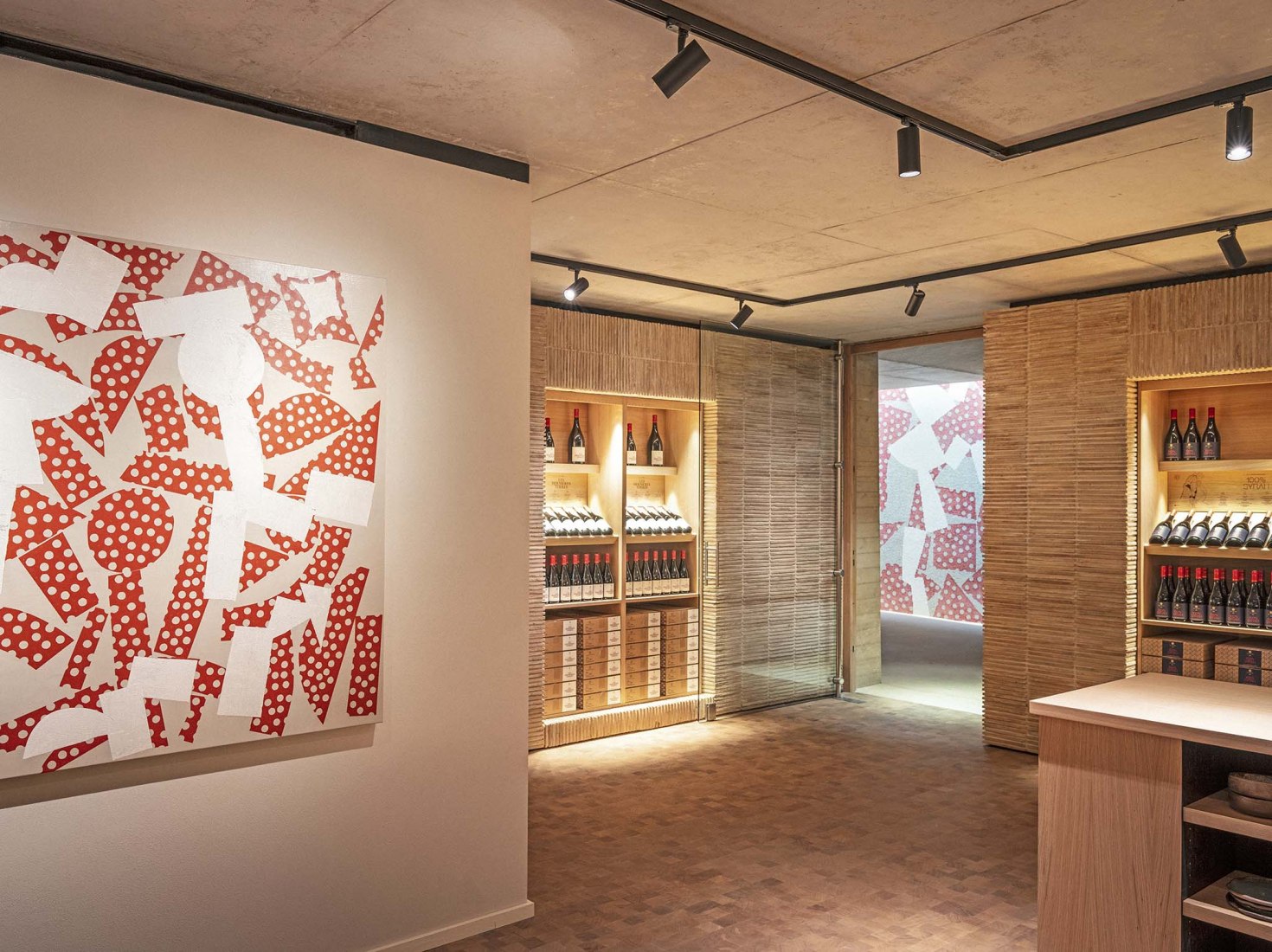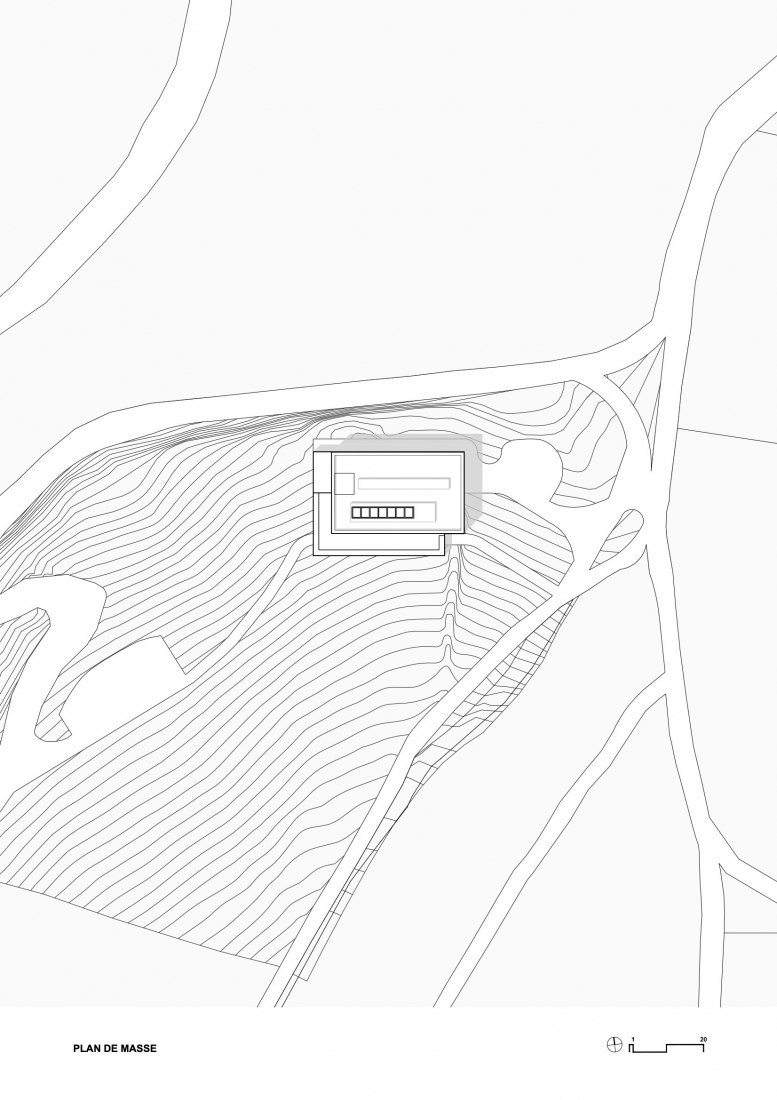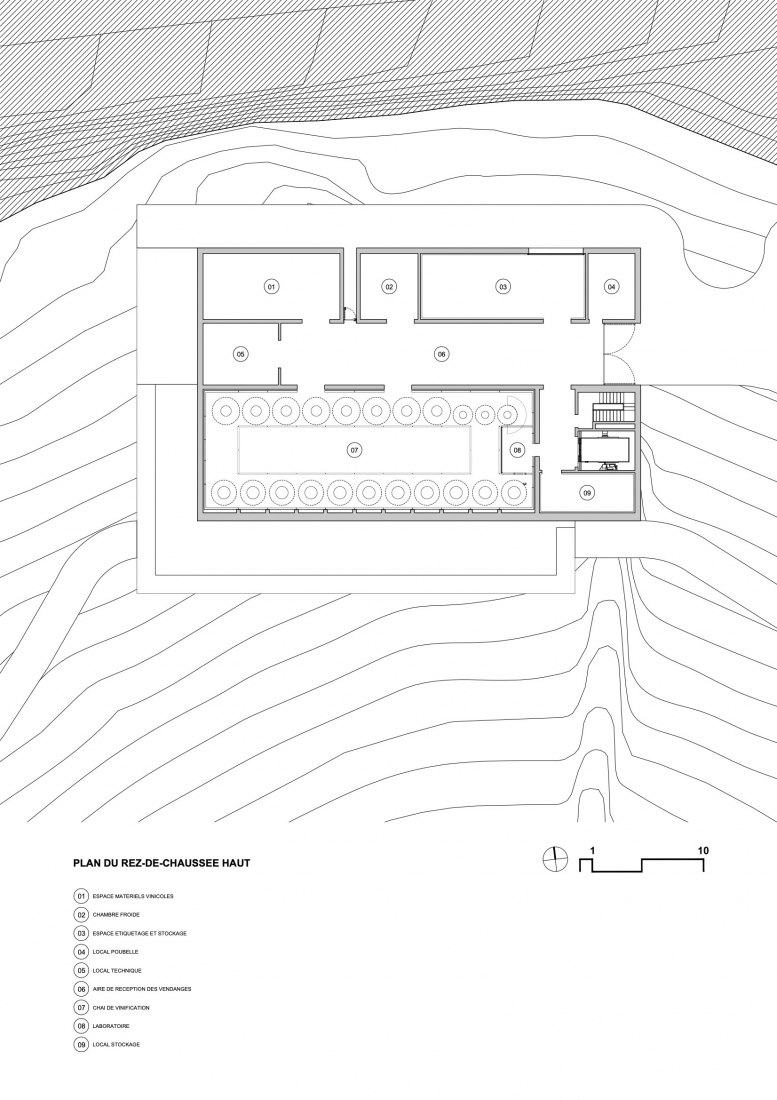The winery, apart from being equipped with tanks, sorting tables, and concrete vats, has a terrace space facing the public where you can sit and enjoy the views of the estate. A ceramic fresco by artist Ives Zurstrassen adorns the entrance hall.
Description of project by Atelier Marc Barani
Gravity vinification
Designed in gravity mode for all vinification, a guarantee of the integrity of the grape and of the upstream work, the cellar is made up of three communicating levels, gravity driving the entire maturation process, from cellaring to bottle storage. This approach without taking oxygen preserves the aromas and color of the wine.
Contemporary architecture, integrated into the landscape
In perfect harmony with its environment, its shape and color recall the colors of the rocks and neighboring lands. As you fly over the hills of Viens and Gignac, you can gaze at Mourre Nègre, the highest point in the Luberon massif which rises to 1,125 meters.
The sorting table
The harvest by hand allows the grapes to be selected from the harvest. A second, more precise sorting is done when the stalk is separated from the cellar in order to remove the last non-qualitative berries and the plant debris still present. The sorting table also makes it possible to separate the solid phase from the liquid phase, less qualitative and produced by crushing the berries during the transport of the harvest and de-stemming.
The tank and the filling of the tanks by gravity
The cellar is equipped with a tank filling system by gravity. Instead of passing through a pump body, the grape berries gently fall into a vat, which is then placed above the receiving tank. This system avoids crushing the berries which leads to the extraction of aggressive tannins and vegetal notes. Most berries remain intact, only their weight helps to burst them and drain the juice.
Maceration in round berries
Thanks to the vatting, the first phase of vinification occurs in round berries, favoring the production of complex, rich and intense aromas of red fruits. The pre-fermentation maceration offers a smoother extraction of color and primary fruity aromas, resulting in a supple and silky tannic structure. The interesting tannins come mainly from the skin and give good aging potential.
A concrete vat room
Concrete is a material that requires careful attention, but has a long lifespan, part of our sustainable vision. Its porosity, comparable to that of wood, provides essential micro-oxygenation to soften and stabilize the polyphenols in wine. Neutral from a taste point of view, unlike stainless steel and wood, concrete reveals a more precise identity of the terroir.

